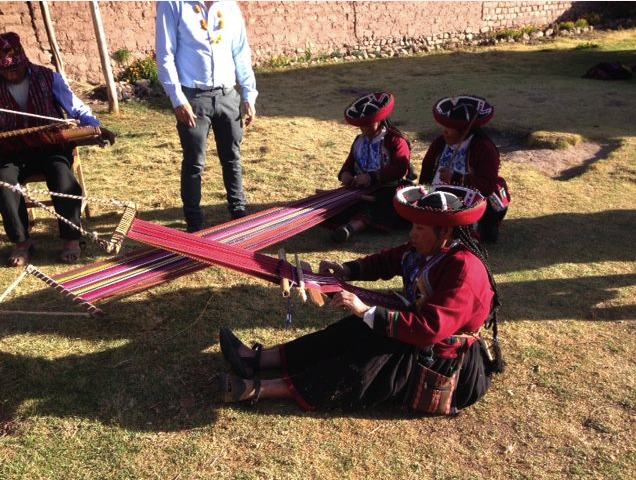Peru: Person-To-Person Culinary Experiences In The Inca World


By Allison Tibaldi, Taking the Kids Correspondent
Like many travelers, I seek person-to-person experiences. It is not enough for me to see the sights, no matter how spectacular. I want to get up-close with locals and explore their way of life.
This is especially important when I hit the road with my college-age children. I want them to gain insights into different cultures, to experience the world in a deep and meaningful manner.

Culinary Tourism As A Way To Connect
We are a family of foodies, seeking authentic cuisine wherever we go. Asking a bus driver for his or her favorite hole-in-the-wall eatery is our preferred method for choosing our next meal. We want real food cooked by locals who are loyal to authentic recipes.
Peru is the latest “it” culinary destination. Peruvian cuisine is a fusion of flavors. The melting pot of indigenous and migrant people is reflected in its kitchen. The native Inca people and the immigrants from Europe, Asia and Africa have combined forces to produce one of the most delicious gastronomic powerhouses in South America.

Peru Up-Close With Kuoda Travel
We recently had the opportunity to dive into Peruvian cuisine during our trip to Cusco and Machu Picchu. Not only did we eat regional specialties, we ate them at the homes of local families. It brought the term culinary tourism to a deeper level.
How did we wind up in these families’ dining rooms? We booked our trip with Kuoda Travel. A hallmark of Kuoda is providing visitors with people-to-people contact.
Owner Mery Calderon strongly believes that interpersonal contact fosters the type of connections that makes travel so rewarding and enriching.
Each itinerary is customized to your specific interests, so there’s no one-size-fits-all mentality.
Our point person understood that we live to eat rather than eat to live. She took the initiative to arrange several meals for us with local families.

How Peruvians Eat At Home
At the home of Tatiana Mujica and Jeremy Cornejo in the town of Maras, we dined on produce picked from their organic garden, prepared by Tatiana, who is a trained chef. We glimpsed the integral role food plays in Peruvian family life. We were surprised to learn that the local Christmas specialty is guinea pig, marinated in herbs and spices and cooked on hot stones.
After lunch, they guided us to a group of weavers. These Inca women use ancient techniques to produce brightly colored textiles that were a feast for our eyes.
At Aida’s cozy home in the Sacred Valley, we sampled numerous varieties of potatoes and corn that grow here. We learned that the super-food quinoa, so trendy in the U.S., is a traditional Peruvian grain.
Hacienda Huayoccari, located in the Sacred Valley town of Urubamba, is an elegant home with a museum-quality art collection. The service and food were a treat.
Seeing Machu Picchu was the experience of a lifetime. But our in-home meals were unforgettable too. We were given a delicious introduction to Peruvian cuisine plus we had the opportunity to see how local Andean people live.
